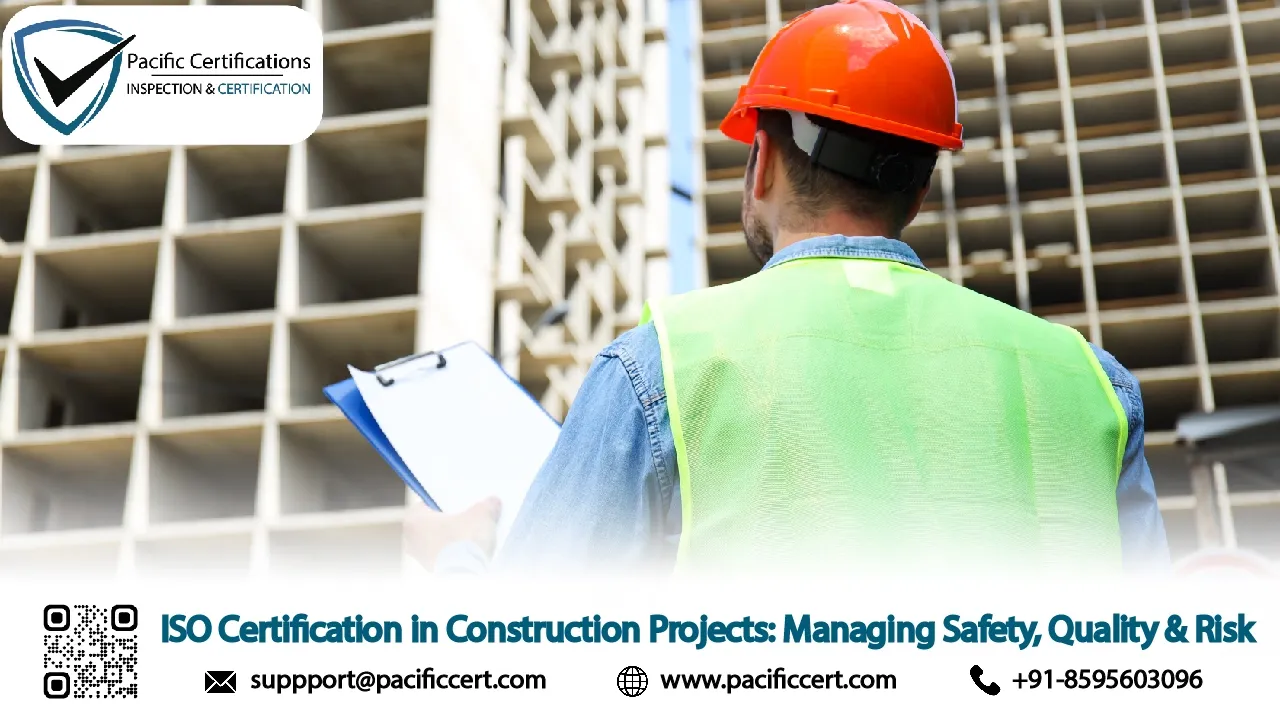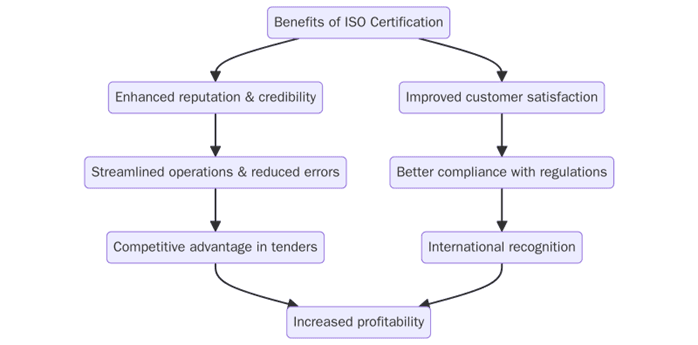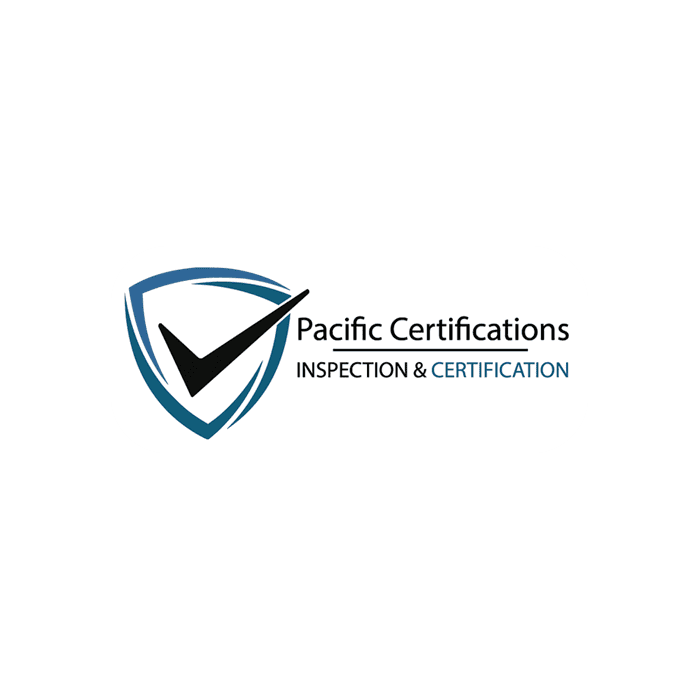ISO Certification in Construction Projects: Managing Safety, Quality & Risk

Construction projects bring together many moving parts - owners, designers, contractors, suppliers and regulators under tight timelines and public scrutiny. Institutions must control site safety, material quality, schedules and costs while meeting environmental and community expectations. ISO certifications give construction teams a shared playbook for planning, execution and handover, so they can control risks, keep people safe and deliver predictable outcomes.
Start your ISO certification journey with Pacific Certifications and strengthen safety, quality and risk management in your projects!
Quick summary
"ISO certifications help construction institutions manage safety, quality, environment, information security and continuity across projects of all sizes. The most used are ISO 9001 for quality, ISO 14001 for environment, ISO 45001 for health and safety, ISO 19650 for BIM information management, ISO/IEC 27001 for security of project data and ISO 22301 for continuity. Certification supports tender eligibility, supplier approval and measurable results through KPIs such as incident rate, right first-time quality, rework cost, audit closure time and SLA performance for critical subcontractors."
Introduction
Every construction project balances safety, quality, schedule and cost. Errors can injure people, cause delays and lead to disputes. ISO standards give a tested way to define scope, assess risk, build controls into day-to-day work and keep evidence that decisions were made responsibly. When owners and general contractors align on ISO requirements, they speed up prequalification, improve coordination and reduce claims at handover.
Why ISO certifications matter in construction?
Clients and regulators expect proof that risks are controlled throughout design and construction. Certification provides independent confirmation that policies exist, roles are clear and controls operate on site and in the supply chain. It also shortens due diligence for bids and partner onboarding because buyers recognize the standards. For multi-site programs, one ISO system creates a consistent way of working across projects, regions and subcontractors.
ISO standards in construction — quick reference table
Standard | Focus area | Where it helps | Example evidence | Useful KPIs and SLAs |
Quality management | Design coordination, inspections, handover | ITPs, NCR logs, punch lists | Right first time rate, defect closure time | |
Environmental management | Waste, noise, dust, spill control | Site EMP, monitoring logs | Waste diversion rate, spill response time | |
Health and safety | Safe systems of work, permits, PPE | Risk assessments, toolbox talks | TRIR, near miss rate, permit turnaround | |
BIM information management | Common data environment and models | BIM execution plan, model audits | Clash resolution time, model approval SLA | |
Information security | Project data, drawings, access | Access reviews, incident logs | Access review cadence, incident MTTR | |
Business continuity | Supply and site disruption planning | BCP, recovery tests | Recovery time objective, drill results |
What are the requirements for ISO certification in construction?
Before institutions can achieve certification, they must ensure that their management systems are structured and supported with evidence that meets global expectations. These requirements cover policies, risk assessments, training, records, and leadership review. They help construction institutions manage safety, quality and risk consistently across projects. Below are the key requirements:

1. Define scope for the project, program, or entire portfolio with organizational boundaries
2. Publish policies for quality, safety, environment, data security and continuity with named owners
3. Conduct risk assessments for design risks, site hazards, supply constraints and information risks
4. Document processes for design reviews, procurement, site controls, inspections and handover
5. Provide evidence records such as permits to work, ITPs, daily logs, calibration and equipment checks
6. Train staff and subcontractors on roles, method statements and emergency response
7. Implement operational controls for high-risk activities, change control and temporary works
8. Carry out internal audits at project and corporate levels with actions tracked to closure
9. Leadership reviews of KPIs, incidents and supply performance
10. Correct non-conformities with root cause analysis and verification of closure
11. Commit to continual improvement through lessons learned and design standard updates
How to prepare for ISO certification in construction?
Preparation involves mapping current practices against ISO standards and filling the gaps with training, records, and stronger controls. Institutions that prepare thoroughly are more likely to achieve certification quickly and with fewer non-conformities.
- Run a gap analysis against target standards across design offices and sites
- Align policies and procedures so project teams and subcontractors use the same forms and workflows
- Train crews and supervisors on permits, risk controls and evidence recording
- Set up documentation in a common data environment for drawings, RFIs, inspections and approvals
- Implement risk controls for lifting, work at height, confined spaces and energy isolation
- Pilot internal audits on an active project, then fix findings before the external audit
- Define KPIs and SLAs such as defect closure time, safety observation response time, supplier delivery SLA and audit closure time
Certification audit
The certification audit is a structured process that evaluates both documentation and site implementation. It is carried out in two stages, followed by surveillance and recertification audits to confirm ongoing compliance.
Stage 1 audit: Reviews scope, policies, risk assessments and project records for readiness.
Stage 2 audit: Evaluates implementation on live sites and design offices through sampling and interviews.
Non-conformities: Must be corrected with documented proof before approval.
Management review: Confirms leadership oversight and follow through on actions.
Final certification: Awarded once all gaps are resolved.
Surveillance audits: Conducted annually to verify ongoing effectiveness.
Recertification audits: Required every three years to maintain certification.
What are the benefits of ISO certification in construction?
The benefits of ISO certification extend beyond compliance, providing safer sites, stronger governance, and measurable results. Organizations that adopt ISO standards can track performance with KPIs and SLAs to reduce rework, improve tender success and gain market trust. Below are some of the key benefits:

- Safer sites through clear permits, supervision and method statements
- Better quality with planned inspections, hold points and defect control
- Fewer delays due to faster approvals and coordinated design reviews
- Lower rework by using BIM and standard details with change control
- Stronger supply chain control through prequalification and SLA tracking
- Easier handover with complete records and defect closure discipline
- Greater tender success where ISO is listed as a requirement
Owners are writing ISO clauses into contracts, asking for ISO 9001, ISO 45001, ISO 14001 and ISO 19650 alignment on all major projects. Common data environments link quality and safety records to drawings, so punch lists and permits live with the model. Many companies add ISO/IEC 27001 due to growing threats to project information and ISO 22301 to manage supply shocks and site shutdowns. Dashboards track incident rate, approval turnaround, defect closure time, audit closure time and supplier SLA performance, showing that certification supports real outcomes, not just paperwork.
Contact us
Pacific Certifications provides accredited ISO certification services for construction companies and project owners. Our audits help you align design, site controls and supply management with clear evidence and measurable results.
Request your ISO audit plan and fee estimate, we will help you map Stage 1 and Stage 2 timelines and evidence requirements for your organization. Contact us at [email protected] or visit www.pacificcert.com.
Ready to get ISO certified?
Contact Pacific Certifications to begin your certification journey today!
Suggested Certifications –
Read more: Pacific Blogs

Author: Alina Ansari
